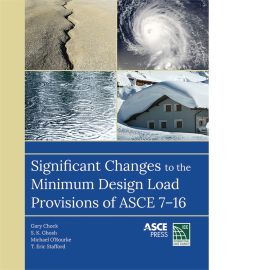Rain, Snow, and Ice Loads: Time-Saving Methods Using the 2018 IBC and ASCE/SEI 7-16
This practical visual guide provides engineers with an overview of the code provisions pertinent to rain, ice, and snow loads and contains simplified, step-by-step procedures that can be applied to determine each load. Specific load types illustrated include ground snow, flat and sloped roof snow, drift loads, sliding snow, ponding instability, ice loads due to freezing rain, wind on ice-covered structures, and more.
Rain, Snow, and Ice Loads: Time-Saving Methods Using the 2018 IBC and ASCE/SEI 7-16 focuses on thow to correctly apply the code provisions in a simple and straightforward manner. Real-world examples for each applicable code section are included to illustrate the application of each code provision, and companion online Excel spreadsheets can be used to calculate loads accurately and efficiently.
- Highly visual with figures, flowcharts, and examples used to explain each procedure
- Examples and companion Excel spreadsheets present calculations in both U.S. and SI units
- Written by a recognized engineering educator and experienced author
| Language | English |
|---|---|
| ISBN | 978-1-26046-152-7 |
| Publisher | McGraw-Hill |
| Code Year | 2018 |




